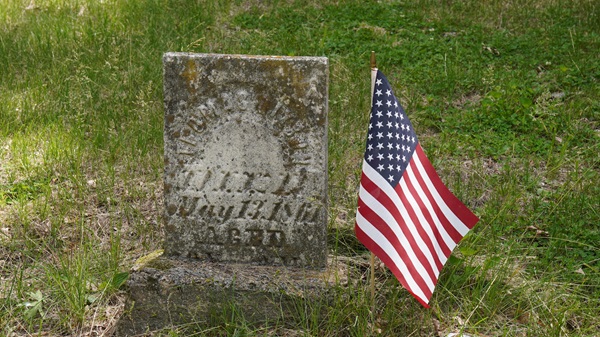
The Hancock-Henderson Quill, Inc.
Andrew Postle, The Quill

This Memorial Day, I started what I hope will become an annual tradition.
Most of my past Memorial Days have been just a three-day weekend consisting of a cookout, maybe some fishing, and a patriotic t-shirt.
This year, I made it a point to locate some ancestors’ graves in the area who served our country and to ensure their graves were adorned with a flag.
A few years ago, I became deeply interested in my heritage and discovered that my family’s roots run deep in Henderson County and western Illinois.
I found that I am a descendant of many pioneers and patriots who struggled and fought for our young, emerging country.
One of those ancestors, and one of the handful of graves I visited this Memorial Day, was Thomas Dixon.
Dixon was born in 1789 in Pennsylvania, where he spent his entire childhood near Troy in the northeast corner of the state.
When Dixon was about 18, he moved with his parents to Knoxville, Tennessee. In 1811, Dixon married Susan Green, and a year later, America would be fighting its “Second War of Independence.”
Like many others living in the Volunteer State, Dixon served his country. He fought under General Andrew Jackson and was in the Battle of Horseshoe Bend and many other engagements during the War of 1812.
In the late 1820s, he and his wife moved to Alabama before heading west to Illinois in 1831, settling in Morgan County.
In 1832, he enlisted in the Army again and took part in the Black Hawk War. Following the conflict, Dixon became one of the first settlers in Durham Township in northern Hancock County.
In 1844, during the “Mormon Troubles,” Dixon was a captain of the La Harpe company of volunteers and was said to be present at the Carthage Jail when the Smith brothers were killed.
In 1855, Dixon moved to Dallas City and lived there with his wife until his death in 1861. Susan and Thomas had nine children, including Hetty Dixon, my fourth great-grandmother, who married Richard Bernard Gittings in 1845.
His son, Thomas L. Dixon, served as a volunteer in Captain Jim Logan’s company during the “Mormon Troubles.”
Before the Civil War, he traveled through the South teaching penmanship.
Thomas L. Dixon spent some time in Chicago, where he met and married his wife, Alline Hendee.
They had four children. They returned to Dallas City, and he held many important offices in the township and county. He passed away in 1898 and is buried behind his father in the Dallas City Cemetery.
As I stood before Thomas Dixon’s grave and the graves of other ancestors I visited Monday, I felt a profound connection to the sacrifices and stories that shaped not only my family but also this nation.
Placing those flags was more than a gesture; it was a promise to keep their legacy alive and to honor the courage of all who served. This Memorial Day tradition has given me a new way to celebrate; not just with cookouts and patriotic t-shirts, but with gratitude and remembrance.
I look forward to next year, when I’ll continue to seek out the resting places of my ancestors, ensuring their contributions are never forgotten and passing this pride in our heritage on to future generations.
Reference- History of Hancock County Illinois, 1880